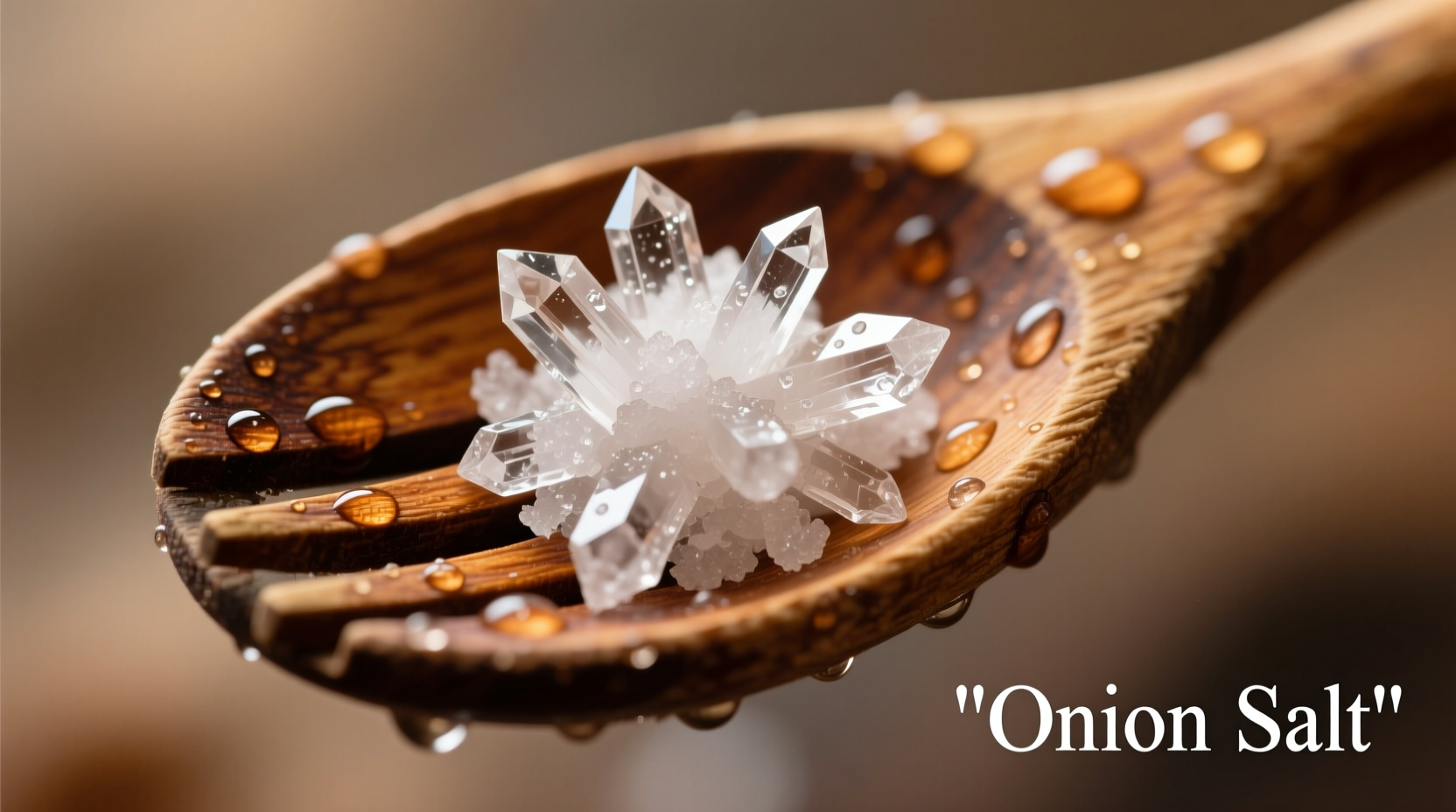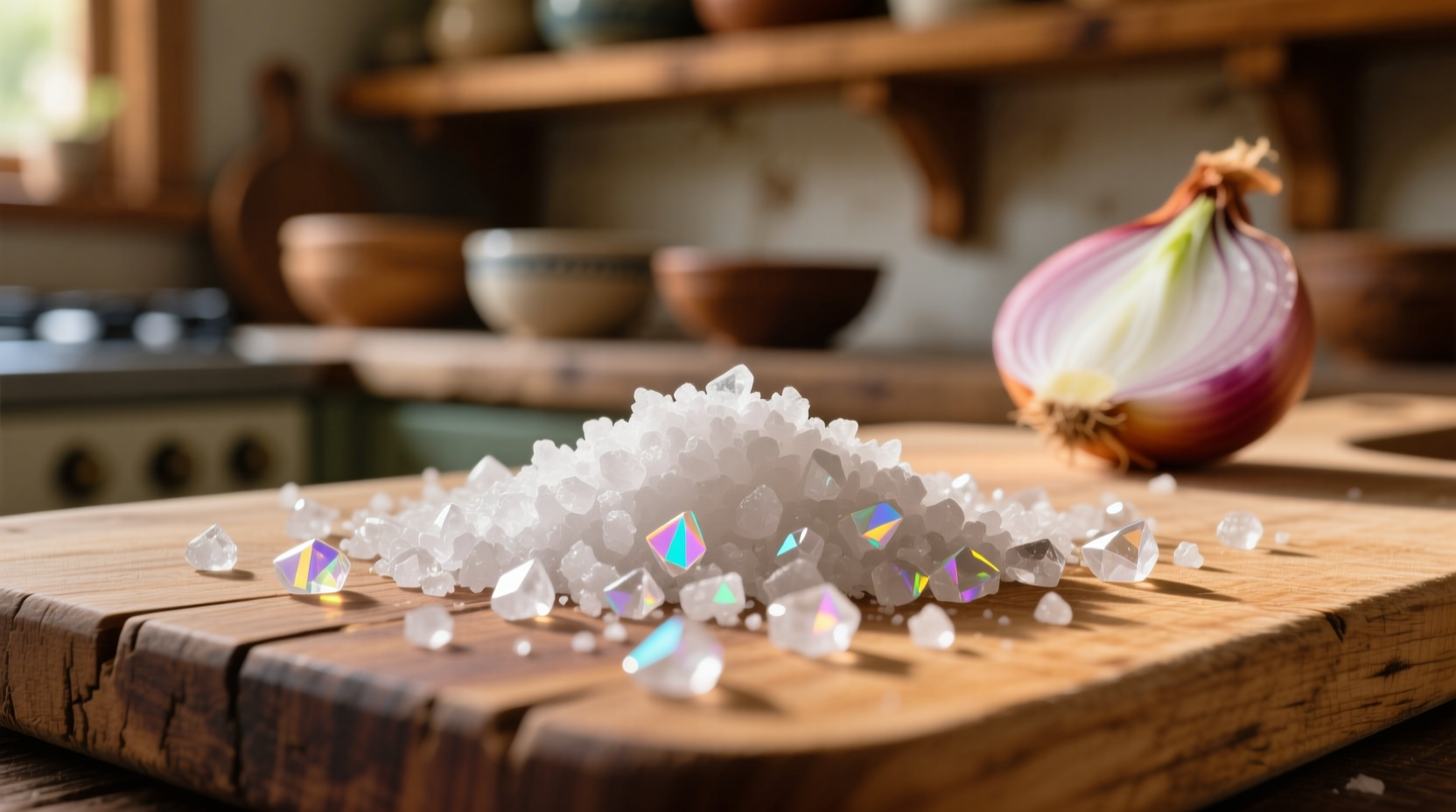What Exactly Is Onion Salt and Why It's Different
Onion salt isn't just salt with onion flavor—it's a precise culinary tool combining dehydrated onion solids and fine salt crystals. Unlike regular table salt, onion salt delivers two essential elements simultaneously: sodium for seasoning and onion compounds for depth. The standard ratio is three parts onion powder to one part salt by volume, though commercial blends sometimes include anti-caking agents like calcium silicate.
When you use onion salt, you're getting consistent flavor distribution that fresh onions can't provide. The dehydration process concentrates the onion's natural sugars and sulfur compounds, creating a more intense, evenly distributed flavor profile that integrates seamlessly into dry rubs, batters, and seasoning blends.
Why Professional Chefs Keep Onion Salt in Their Pantry
Many home cooks overlook onion salt's unique advantages. Unlike fresh onions that add moisture (which can prevent proper browning), onion salt delivers pure flavor without altering a dish's texture. This makes it ideal for:
- Dry rubs for meats where moisture would prevent crust formation
- Batter seasonings for fried foods
- Instant flavor boosts in soups and sauces
- Seasoning for roasted vegetables
- Enhancing homemade breads and crackers
Food scientists have documented how the Maillard reaction—the chemical process responsible for browning and flavor development—works more effectively when using dry seasonings like onion salt rather than fresh onions. The absence of water allows proteins and sugars to react at higher temperatures, creating more complex flavors.
Onion Salt vs. Alternatives: When to Use What
Understanding when to reach for onion salt versus other onion forms is crucial for optimal results. This comparison helps you make informed decisions based on your cooking needs:
| Seasoning Type | Best For | Flavor Intensity | Moisture Content |
|---|---|---|---|
| Onion salt | Dry rubs, batters, instant seasoning | ★★★★☆ | 0% (dry) |
| Onion powder | When controlling salt separately | ★★★★☆ | 0% (dry) |
| Fresh onions | Caramelizing, texture contribution | ★★☆☆☆ | 89% (high moisture) |
| Onion flakes | Visual appeal in dishes | ★★★☆☆ | 5% (low moisture) |
According to research from the Culinary Institute of America's flavor chemistry department, onion salt's advantage comes from its dual functionality—providing both seasoning and flavor in one step without introducing moisture that would interfere with critical cooking processes like searing or crisping.
Perfect Pairings: What Foods Benefit Most from Onion Salt
While versatile, onion salt shines in specific applications where its unique properties solve common cooking challenges:
Meat Preparation
Apply onion salt to steaks, chops, or poultry before searing. The dry formula creates an immediate flavor foundation without drawing out moisture that would prevent proper browning. For grilled meats, use it in dry rubs where fresh onions would burn on the grill.
Baked Goods
Incorporate into bread doughs, crackers, or savory scones. Unlike fresh onions that can create pockets of moisture affecting rise, onion salt distributes evenly and won't compromise texture. Try 1-2 teaspoons per loaf of bread for subtle onion flavor.
Vegetable Roasting
Toss vegetables with olive oil and onion salt before roasting. The salt draws out minimal moisture compared to fresh onions, allowing vegetables to caramelize rather than steam. Root vegetables particularly benefit from this approach.
Soup and Sauce Enhancement
Add during the early cooking stages of soups and sauces for foundational flavor. Unlike fresh onions that require time to break down, onion salt integrates immediately, saving preparation time while delivering consistent flavor.

Make Your Own Superior Onion Salt
Commercial onion salt often contains anti-caking agents and inconsistent ratios. Creating your own ensures purity and customization:
Basic Homemade Onion Salt Recipe
- 3 tablespoons high-quality onion powder
- 1 tablespoon fine sea salt or kosher salt
- Optional: 1/4 teaspoon garlic powder for enhanced complexity
Mix thoroughly in a small bowl, then store in an airtight container. For extended shelf life, add one or two uncooked rice grains to absorb moisture.
Customization Options
- Smoked version: Use smoked sea salt for a barbecue-friendly blend
- Herb-infused: Add 1 teaspoon dried thyme or rosemary per batch
- Spicy kick: Include 1/4 teaspoon cayenne pepper for heat
According to USDA food safety guidelines, properly stored homemade onion salt maintains peak quality for 6-12 months when kept in a cool, dark place in an airtight container. The National Center for Home Food Preservation notes that the primary degradation factor is moisture absorption, which can cause clumping and flavor loss.
Storage Secrets for Maximum Freshness
Onion salt's shelf life depends on proper storage. While commercial versions often include anti-caking agents, homemade versions require more careful handling:
- Store in glass or opaque plastic containers—never metal (can react with sulfur compounds)
- Keep away from heat sources (above 75°F accelerates flavor degradation)
- Include a moisture absorber like silica gel packets for homemade versions
- Never store above the stove where heat and steam fluctuate
Signs your onion salt has degraded include clumping (indicating moisture absorption), faded color, or diminished aroma. Properly stored, commercial onion salt remains usable for 18-24 months, while homemade versions last 6-12 months.
Smart Substitutions When You're Out of Onion Salt
Ran out of onion salt mid-recipe? These substitutions maintain flavor balance while accounting for moisture differences:
- Onion powder + salt: Use 3 parts onion powder to 1 part salt by volume
- Fresh onions: For every teaspoon of onion salt, use 1 tablespoon finely minced fresh onion plus 1/4 teaspoon salt (adjust liquid in recipe)
- Onion flakes: Use 2:1 ratio of flakes to salt, but expect less intense flavor
- Shallots: Substitute with 1.5x shallot powder plus salt for milder flavor
When substituting fresh onions for onion salt, remember that moisture content affects cooking results. In applications requiring dryness (like batters or dry rubs), fresh onions will prevent proper crisping. The American Culinary Federation recommends reducing other liquids by 1-2 teaspoons per tablespoon of fresh onion substituted in baking applications.
Frequently Asked Questions
Can I use onion salt instead of regular salt in all recipes?
No—onion salt contains less actual salt by volume due to the onion powder. Substitute at a 1.5:1 ratio (1.5 tsp onion salt for 1 tsp regular salt) and adjust to taste, as the onion flavor may overwhelm delicate dishes.
Does onion salt have the same health benefits as fresh onions?
Dehydration preserves most beneficial compounds, but some vitamin C is lost. The sulfur compounds responsible for many health benefits remain stable. However, onion salt contains added sodium, so monitor total salt intake if using for health reasons.
Why does my homemade onion salt clump together?
Moisture absorption causes clumping. Store in an airtight container with a desiccant like silica gel or a few uncooked rice grains. Always use dry utensils when scooping to prevent introducing moisture.
Is onion salt gluten-free?
Pure onion salt (onion powder + salt) is naturally gluten-free. However, some commercial brands may process in facilities with gluten or add anti-caking agents containing gluten. Always check labels if you have gluten sensitivity.











 浙公网安备
33010002000092号
浙公网安备
33010002000092号 浙B2-20120091-4
浙B2-20120091-4